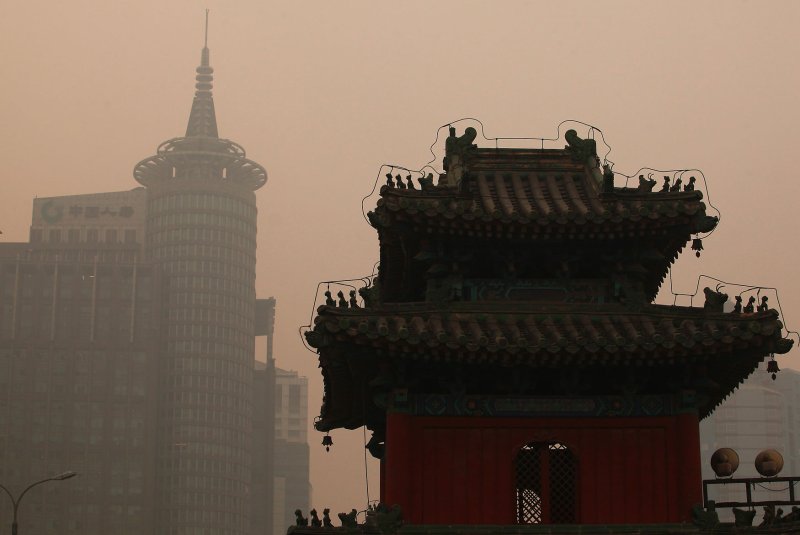A thick smog, rated as 'Hazardous' by the U.S. embassy, hangs over central Beijing on February 20, 2014. Hazardous pollution from China travels in large quantities across the Pacific Ocean to the United States, a new study has found, making health and environmental problems an unexpected side effect of U.S. demand for cheap China-manufactured goods. Severe pollution has made the Chinese capital "barely suitable" for living, according to a new official Chinese report. UPI/Stephen Shaver |
License Photo
PASADENA, Calif., April 15 (UPI) -- Asian cities like India's Dehli and China's Beijing regularly feature dangerous levels of air pollution and smog. These these abysmal conditions are more than just a burden on the health and lung capacity of local residents.
A new study suggests Asia's dirty air is influencing the weather patterns of North America and affecting the lives of people thousands of miles away.
According to researchers at the Jet Propulsion Laboratory at the California Institute of Technology, pollution across China, India and other parts of Asia is strengthening storms above the Pacific Ocean -- storms which ultimately feed into and influence weather systems across the United States and North America.
"The effects are quite dramatic," lead author Yuan Wang, a researcher at the Jet Propulsion Laboratory, told BBC News. "The pollution results in thicker and taller clouds and heavier precipitation."
The new study estimates that winter storms in the northwest Pacific are now 10 percent stronger than they were 30 years prior, before the industrial booms of India, China and elsewhere.
Wang and his fellow researchers not only studied real weather patterns, but also tested aerosol pollutants and their interaction with water vapors in a lab setting. Their experiments helped them better understand how smoke from coal-burning power plants mixes with moisture in the air and encourages the development of bigger, denser clouds.
These bigger, heavier clouds strengthen winter cyclones off the coast of Japan as they begin their trek across the Pacific.
"The increasing pollution in Asian countries is not just a local problem, it can affect other parts of the world," Wang told Live Science.
The new study was published this week in published in the Proceedings of the National Academy of Sciences.
[BBC News]
[Live Science]















